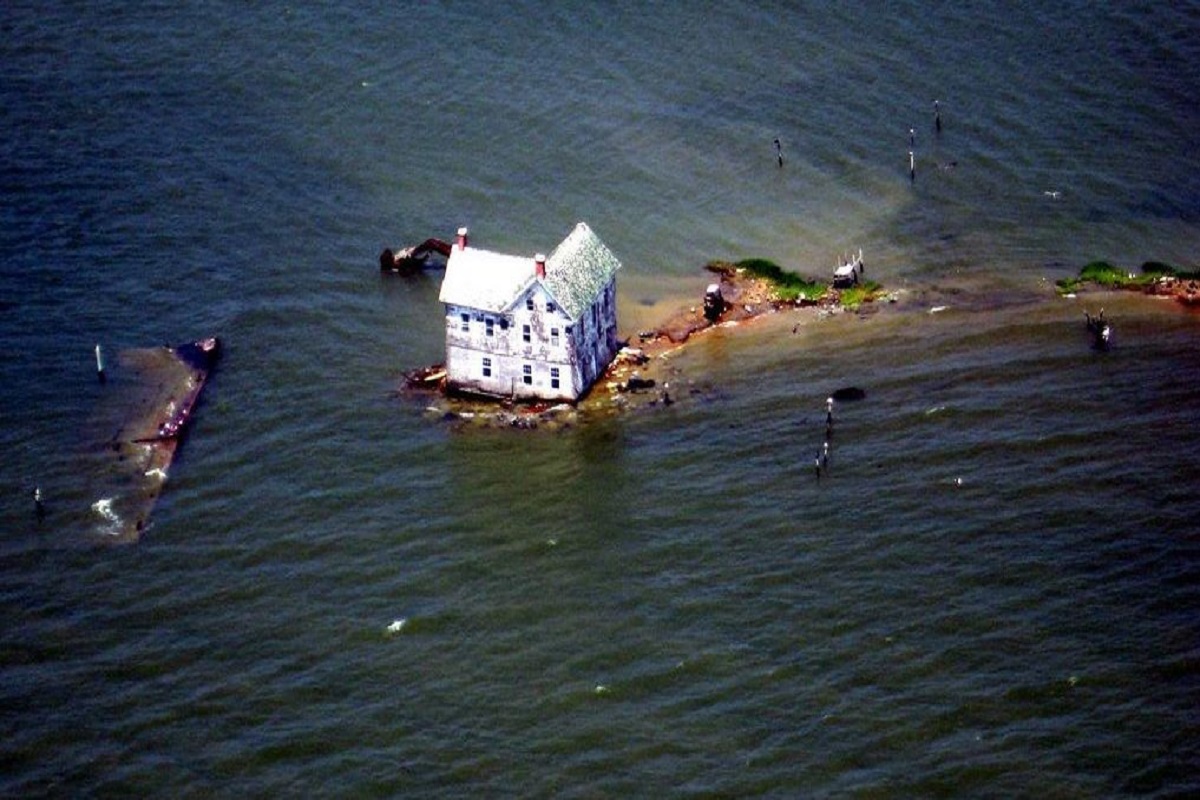Holland Island (United States): Holland Island, situated in the Chesapeake Bay, was once a thriving village inhabited by British colonists in the 1600s. By the early 20th century, it had become one of the largest island communities in the region, with nearly 400 residents primarily engaged in fishing and farming.

However, the island’s vulnerability to erosion became apparent in 1914, leading to the relocation of most residents to the mainland. Despite some efforts to protect the island with stone walls, the last family left in 1918. Many of the island’s houses have since been destroyed, with only their remnants visible today. Eventually, the encroaching floods will completely submerge the remaining structures.
Okunoshima (Japan): During World War II, Okunoshima Island in Japan was a secret facility for manufacturing poison gas from 1929 to 1945. The Imperial Japanese Army kept the island hidden from official maps to avoid violating international laws. After the war, hundreds of rabbits, previously used for testing without supervision, were found on the island. The rabbit population multiplied rapidly after the Allied forces liberated them.
Today, Okunoshima Island has regular ferry service and even a hotel but no permanent human residents. The rabbits on the island are cherished, and hunting them or bringing dogs or cats to the island is strictly prohibited.
Ross Island (India): Ross Island, located in the Andaman Sea, remained uninhabited until the mid-19th century. However, during the Indian Rebellion of 1857, the British declared it a prison colony and sent numerous “hard-core elements” there as prisoners.
Both British guards and inmates constructed numerous buildings on the island, allowing the colony to thrive for a time. However, an earthquake in 1941 devastated most of the man-made structures. Subsequently, people began leaving in large numbers. In 1942, the Japanese army arrived on Ross Island to find it nearly deserted. They established a command post and built some defenses but left three years later when the Allies advanced. Since then, the island has remained uninhabited.
Nomans Land (United States): Nomans Land, located south of Martha’s Vineyard, was sporadically settled during the colonial era, including by a Wampanoag village. However, in the 1940s, the United States Navy claimed the island as a bombing range due to the presence of toxic substances like lead and unexploded munitions. As a result, the area became off-limits to the general population. Since 1998, it has been under the administration of the U.S. Fish and Wildlife Service and serves as a sanctuary for migrating birds.
Spinalonga (Greece): Spinalonga, a small Greek island off the coast of Crete, was home to one of Europe’s last remaining leper colonies from 1903 to 1957. Life on the island was challenging, especially for those forcibly separated from their families on the mainland, leading to reports of numerous suicides by jumping off the fort’s high walls.
With the discovery of a treatment for leprosy in the mid-20th century, the population of Spinalonga rapidly declined. The island’s last regular occupant, a compassionate priest, left in 1962.



